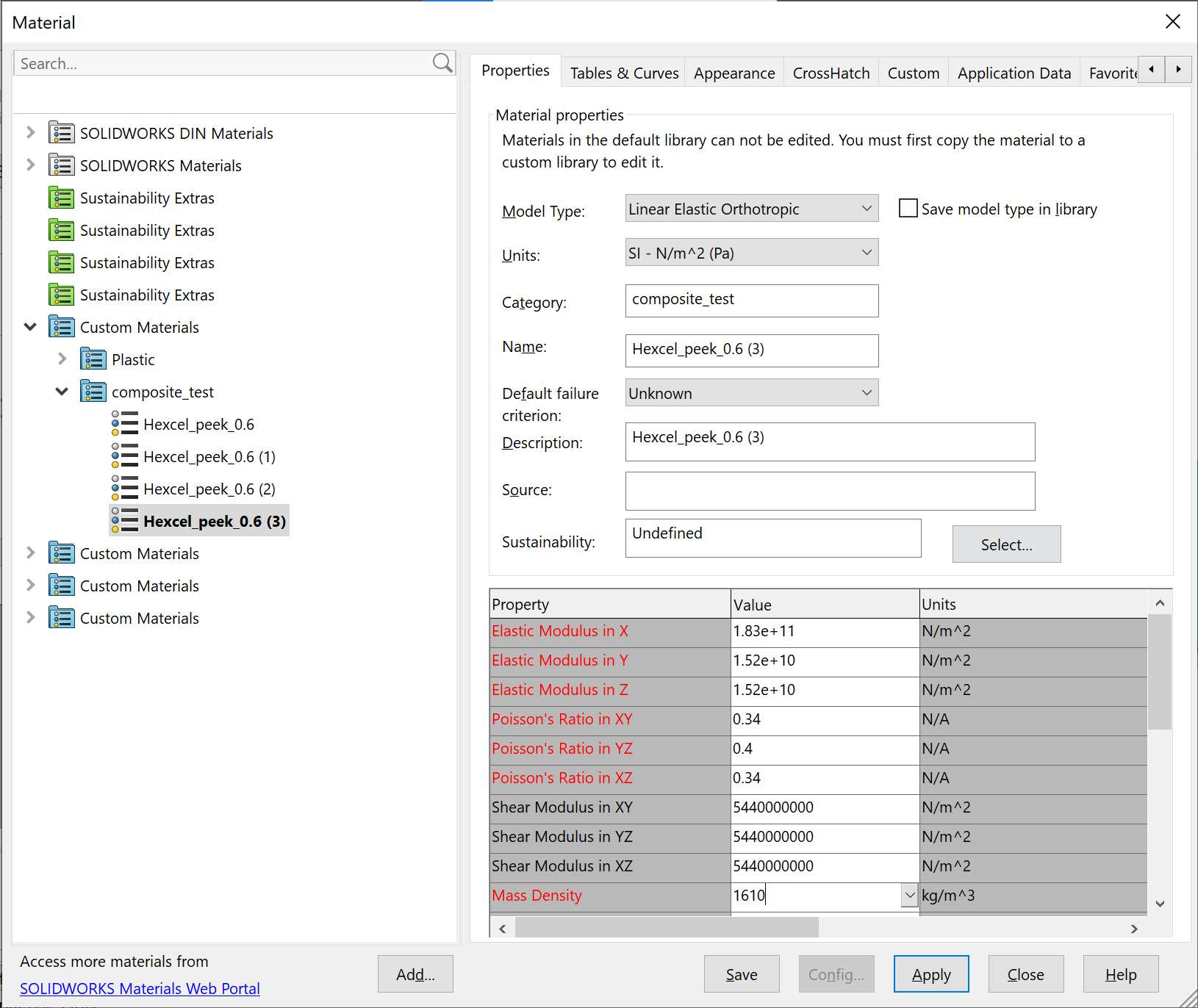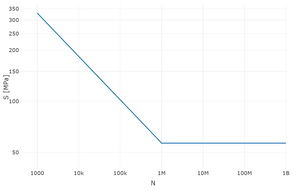Estimating the Elastic Properties of Continuous Fiber Composites

The information presented in this blog post is for educational purposes only. It should not be used for engineering design or relied upon as engineering advice.
One of the challenges with modeling composite materials is determining the orthotropic material properties to enter into simulation software. Fortunately, for continuous fiber composite materials, it's possible to estimate the orthotropic properties from the properties of the fiber and matrix materials and the volume fraction of the fiber [1]. The EngineeringPaper.xyz sheet below (or open the sheet in a new window) can be used to calculate the orthotropic properties for a continuous fiber composite. Note that typically the 1 direction indicates fiber direction and the 2 and 3 directions indicate the cross fiber directions, however, SolidWorks simulation uses the x direction to indicate the fiber direction and y and z directions to indicate the cross fiber directions. The screenshot below shows how the material properties from the sheet below can be entered as a SolidWorks custom material. For this example, HexTow IM8 was used as the fiber material and PEEK was used as the matrix material.
This approach to estimating continuous fiber carbon fiber composites is very powerful at the early design phases since it allows the quick evaluation of several different composite systems. Note that this approach is not limited to polymer matrix composites and can be applied to continuous fiber metal matrix composites as well.

[1] Laszlo P. Kollar, G. S. S., 2009, Mechanics of Composite Structures., Cambridge University Press.
Estimating the Elastic Properties of Continuous Fiber Composites
by u/mgreminger in EngineeringPaperXYZ


